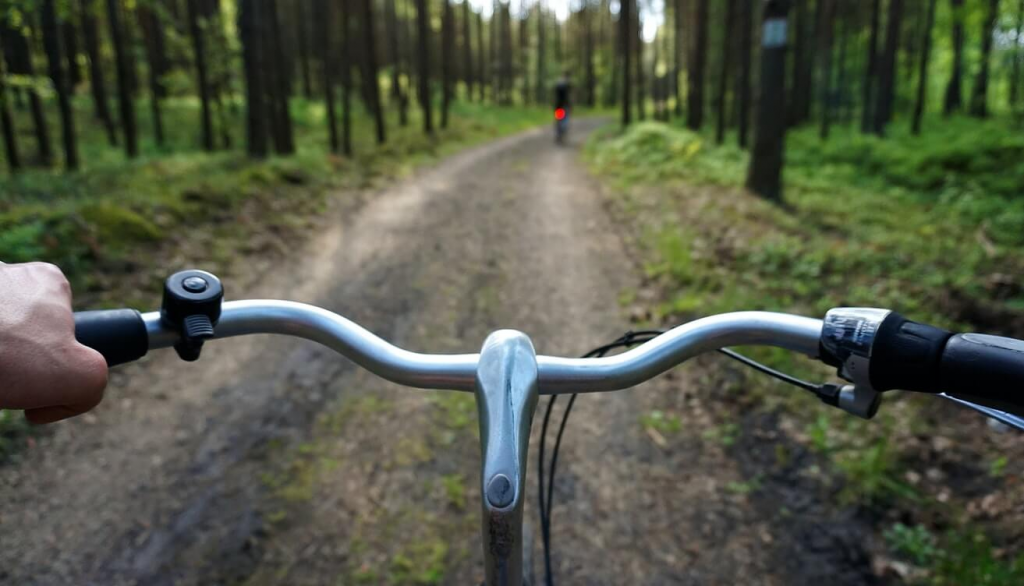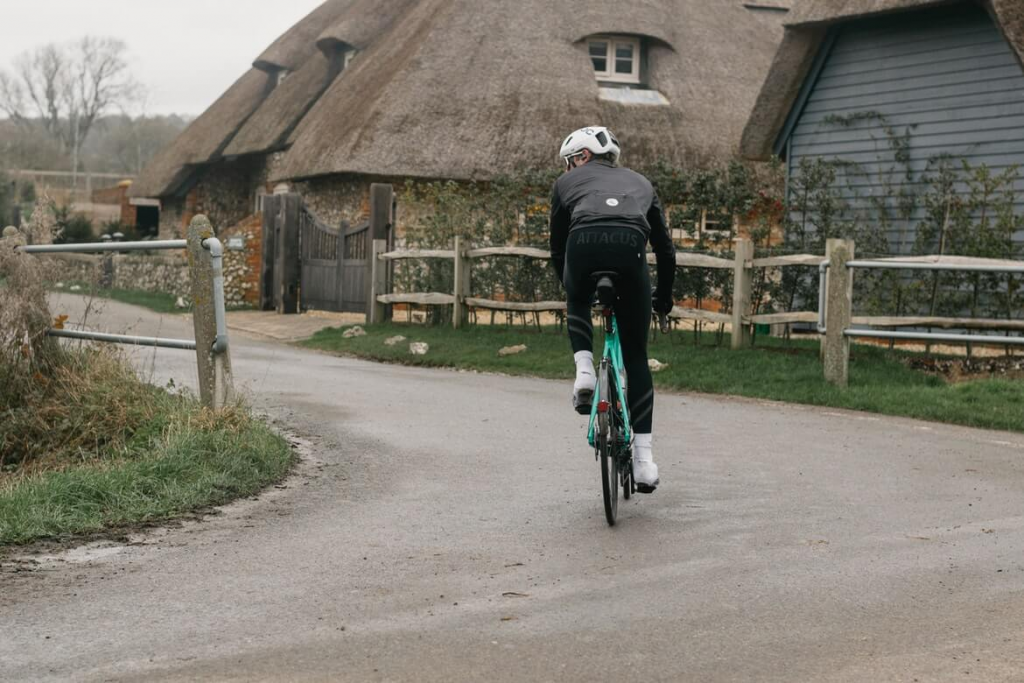Riding your bike to work is inarguably one of the best things you can do for your physical as well as mental health. Biking helps you stay fit, healthy, as well as save gas money. It is a great way to get your daily dose of exercise while commuting to work. There are so many other benefits that come with riding a bike. So, why not start now?
Oh, we get it. Despite the apparent reasons for bike commuting, there never seems to be a good time to start. You may postpone it because you don’t feel safe or confident enough in your skills or simply because you think that bike commuting is difficult. Whatever your reasons are, you are here. So, that means you want to start riding your bike to work (Bravo!). We are here to help newcomers and longtime bike commuters ride safely and confidently to work every day. So, let’s jump right in!
Safety-Check Your Bike
If you are going to commute to work every day, you need a bike that you can ride through different weather and road conditions. So, the first thing that you should do is safety-check your bike to make sure that you are safe to ride it.
So, how can you check your bike to make sure it’s good to go? Start at the front of your bike and work your way back.
Check your bike’s tire pressure
- First, look at the front and back tires and make sure that they have the right pressure. Do that by pinching the tire; see if you can push it in. If you can, that means that the tires don’t have the right amount of air.
- Check the sidewall of the tire to see if they have the proper pressure too. A little tip: Try not to fill your tires at gas stations because their high volume can potentially explode your bike tires.
- Use higher air pressure if you generally ride on the road. But, if you’re riding on gravel, use less pressure.
- Check that the valve stem on your tires sticks straight out of the rim. If it doesn’t, deflate the tire, rotate the tire and tube in the proper direction. Then, inflate it again.
Check if your bike wheels are straight and spokes are tight
- The first thing that you should do is spin the wheels and make sure that they don’t wobble.
- Next, check the spokes and replace them if they are broken.
- Check that all spokes are tight enough by squeezing together each pair that crosses one another.
You need to recheck them each time the wheels take a hard hit.
Check if the wheels, brakes, and handlebars are tight enough
- Make sure that the ‘quick release’ mechanisms are tight, and hold the wheels on securely.
- Ensure that both brakes levers are tight enough. There should be about one or two fingers of space between the brake levers and the handlebars.
- Check if the levers are moving at least ½ an inch before engaging the brakes fully to make sure that you have more controlled braking.
- Now, twist the handlebar from side to side. If it is tight enough, it should not move out of alignment.
Check if the seat is secure
- Try twisting the seat from side to side, backward, and forward. If it rotates, it means that it is not safe.
- Keep in mind that suspension seat posts typically have some movement, so they may twist side to side.
Make sure that your bike chain is clean and lubricated
- If your bike chain is dry and dirty, clean and lubricate it; this will prevent rust and increase the lifespan of your bike chain and other drivetrain components.
- Make sure to wipe off any excess oil or lubricant with an old cloth.
And finally, get on that bike and see if everything feels nice and safe. If it does, it’s probably ready to go.
Remember, always check the tire pressure and the brake levers before each ride. And regularly check the other items that we talked about above.
Plan Ahead and Practice the Route

Planning and practicing a route that best suits you will make a huge difference in your bike commuting experience. You will feel more confident, safe, and as a result, you will enjoy riding your bike to work more. So, here is how you can go about it.
The biggest roads into and through towns and cities are usually not the best option for a bike rider. You want to go for the small roads, backstreets, or cycle tracks that are not that much frequented by cars and other motor vehicles. These roads are usually quiet and less stressful, especially for beginner cyclists. Taking these roads will save you from heavy traffic, noise, and air pollution.
Unfortunately, cycle-friendly routes are often not signposted, so you will need to research to discover shortcuts and new alternatives to cycling to work. But, how can you do that?
The first option is a paper map; if you are a rural commuter, choose a map that shows smaller roads in detail. If you are an urban commuter, go for a larger-scale city map since they are more practical. There are cyclist-friendly maps, too, that show city cycle tracks, roads with cycle lanes, quieter roads, traffic-free cycle tracks, etc.
But, if you do not like the old-school option and want something more modern, you can get a map on your phone, such as Google Maps. You have the option to click on the cyclist icon, and the online route planner will give you turn-by-turn instructions.
Now it is time to jump on the saddle and practice the route. It would be best if you fix your map or smartphone to your bike’s handlebar or stem; if you have problems seeing the map, often stop and check it. Try to highlight, and take notes on your paper or phone so that you don’t forget the routes. Record comments if a particular route has dangerous potholes, is muddy, doesn’t have any streetlights, and so on; this will help you avoid these routes in harsher weather conditions or at night.
After you find a good route to work, try riding from home to work and vice versa without the help of any maps or notes.
Give Yourself Time
Make sure to give yourself plenty of time to cycle to work at a relaxed pace, especially if you are a beginner cyclist. Sure, sprinting to work is better for your fitness, but it can be more dangerous if you are not very experienced in cycling. Even if you’re in a rush, give yourself enough time to react to other road users, never jump red lights, and do not break The Highway Code. Besides, you probably don’t want to arrive at work all flushed and sweaty.
Prepare Mentally and Physically
You need to prepare yourself mentally and physically before each ride to work. Anything can happen, but you should not feel stressed, anxious, or scared since that can negatively affect your riding experience.
Consider investing in a few items such as a cycling rain jacket, waterproof footwear, waterproof backpacks, and panniers that are necessary for keeping you warm and dry.
Complete Your Commuter Outfit

Having the proper commuter outfit will make your riding experience more comfortable and enjoyable. But you do not need to buy a ton of fancy items for that; Here are the essentials:
- Bike helmet: Wearing a helmet when riding a bike is essential for your safety. It protects your head from injuries in case you fall off your bike or crash. Find a proper-fit helmet that you like, and wear it each time you go for a ride.
- Cycling rain jacket: An important part of your commuter outfit is a cycling rain jacket. Pick one that is breathable, warm, windproof, and that keeps the moisture out. It would be best if it had some reflective detailing to make you more visible in the dark.
- Waterproof cycling footwear: It is impossible to feel comfortable when your feet are wet and cold. So, wear waterproof shoes or overshoes that keep your feet warm and toasty even on cold, wet days. These are typically made of neoprene and waterproof material that will protect your feet from the water.
- Cycling glasses: Cycling glasses are (almost) essential for sunny days as well as rainy days. They protect your eyes from the rain, wind, dust, and even bugs. Choose a nice pair of cycling classes that fit well and provide excellent clarity.
- Waterproof backpacks and panniers: Waterproof backpacks or panniers are great for storing your traveling items like clothes, smartphones, laptops, and so on. They come in various shapes, sizes, and colors. Also, they are really convenient to carry around.
Make Yourself Visible
Lack of visibility makes it difficult for you to see other people and vehicles and the other way around, which increases the risk of road accidents. In order to prevent that, use cycling lights so that you see further in front of you and notice people, vehicles, traffic signs, or animals on the road earlier, improving your reaction time. Wearing neon or luminescent clothes with reflectors is also a great way to make yourself more visible on dark or rainy days.
Be Sensible Around Traffic
You must be sensible around traffic. Pay attention to road obstacles, pedestrians, and other vehicles, and react accordingly. Also, be a defensive cyclist; respect the traffic signs, and please don’t ride with your headphones on.
Ride with Confidence
The more confident you are on the road, the safer you will be. But, how can you ride with confidence? The first thing that you can do is choose a route that you feel more comfortable and confident riding in; when you feel ready, you can slowly start exploring other streets and challenge yourself more.
Practice makes perfect. So, practice your riding skills as much as possible, and work towards improving your handling skills such as looking over your shoulder, signaling, and moving out.
Becoming a cycle commuter offers almost complete benefits and only a few drawbacks. With the proper gear, preparation, and skills, you can confidently tackle a cycling commute every day in pretty much all kinds of weather. So, what are you waiting for? Get your bike ready, and follow the above tips to take your bike trips to the next level.




